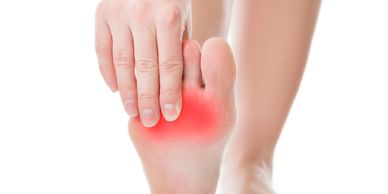Custom Orthotics brampton
Foot Pain Solution
Orthotics For Flat Feet
Orthotics For Flat Feet

Foot pain can hinder daily activities, but custom orthotics offer a solution. Custom Orthotics work by supporting the feet and correcting biomechanical imbalances. It also improves alignment and redistributes pressure. This results in improved posture, mobility and pain relief. In our foot clinic, we have found that the most common conditions requiring orthotics are flat feet, heel pain and diabetic complications.
Orthotics For Flat Feet
Orthotics For Flat Feet
Orthotics For Flat Feet

Flat foot is a deformity in which the arch of the foot almost completely touches the ground. All babies are born with flat feet and while most people will develop arch as they grow older some never do. Studies indicate that about 20 to 30% of the general population have flat feet. Also known as pes planus, flat feet can affect ones posture and alignment when standing or walking and increases the chance of ankle, knee, hip, back pain and foot pain. Not surprisingly, flat feet is one of the most common reasons for the people seeking orthotics in our foot care foot clinic.
Orthotics For Heel Pain
Orthotics For Flat Feet

Orthotics can be very versatile to accommodate a host of foot conditions. Our foot care specialists will design orthotics with materials and modifications specific to each treatment needs. Things to consider when making an orthotic are the conditions being treated, activity level, footwear, and even body size. Heel pain is one of the most common foot pain complaint, with the most common causes of heel pain being plantar fasciitis, achilles tendonitis and heel spur. Orthotics for heel pain can include such modifications, as heel pad, extra layer of top cushion, hole in the heel with foam disk and metatarsal pads to offload painful pressures.
Orthotics For Diabetics
Different Styles of Orthotics

People with diabetes are at a higher risk of developing complications and foot pain as diabetes causes nerve damage and reduced circulation. Consequently diabetics are not able to feel injuries or if something is wrong with their foot. To prevent sores or ulcers, diabetic orthotics are usually softer and more bulky than non diabetic orthotics and provide added cushioning to the foot. Orthotics for diabetes are designed to redistribute pressure along the soles of the feet to minimize areas of excessive pressure and friction. Diabetic orthotics are ideally full length and are lightly colored which can more easily detect open sores or bleeding. Proper foot care for diabetes include wearing comfortable footwear with the orthotics such as orthopedic shoes with their wide toe box and soft outsoles.
Different Styles of Orthotics
Different Styles of Orthotics
Different Styles of Orthotics

Orthotics come in many different styles which can be based on preference or treatment needs. Orthotics can be full length of half length. They can be hard, semi flexible or soft. They can be cut to fit work boots, dress, casual or sport shoes. Similarly, they can come in a variety of colors and raw materials. What works for each patient can be decided between the patient and the specialist.
Prognosis
Different Styles of Orthotics
Different Styles of Orthotics

Custom orthotics corrects and manages gait anomalies and existing foot problems while being worn, but will not perform structural changes of the foot while not being worn. Once prescribed or recommended by a medical professional following an assessment, custom orthotics are a medical necessity and should be worn daily indefinitely.
This website uses cookies.
We use cookies to analyze website traffic and optimize your website experience. By accepting our use of cookies, your data will be aggregated with all other user data.